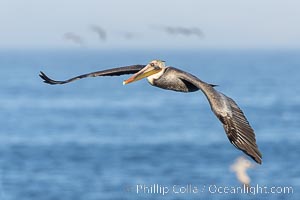
California Brown Pelican Flying over the Ocean, wings outstretch, with a few other pelicans in the background.
Species: Brown Pelican, Pelecanus occidentalis, Pelecanus occidentalis californicus
Location: La Jolla, California
Image ID: 38807
Species: Brown Pelican, Pelecanus occidentalis, Pelecanus occidentalis californicus
Location: La Jolla, California
Image ID: 38807
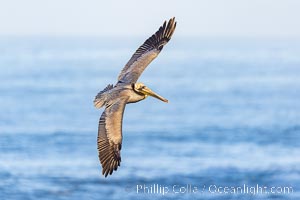
California Brown Pelican banking and turning as it flies over the ocean.
Species: Brown Pelican, Pelecanus occidentalis, Pelecanus occidentalis californicus
Location: La Jolla, California
Image ID: 38809
Species: Brown Pelican, Pelecanus occidentalis, Pelecanus occidentalis californicus
Location: La Jolla, California
Image ID: 38809
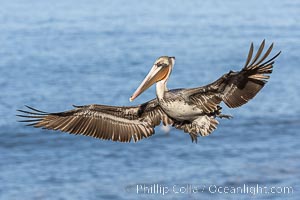
California Brown Pelican in flight, spreading wings wide to slow before landing on cliffs, Pelecanus occidentalis.
Species: Brown Pelican, Pelecanus occidentalis, Pelecanus occidentalis californicus
Location: La Jolla, California
Image ID: 38842
Species: Brown Pelican, Pelecanus occidentalis, Pelecanus occidentalis californicus
Location: La Jolla, California
Image ID: 38842
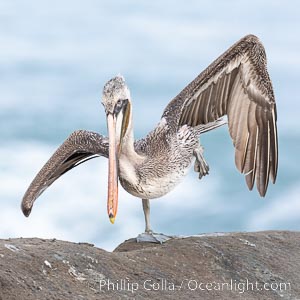
Young brown pelican performing yoga Warrior Three or Half Moon Pose Virabhadrasana, on one leg with wings raised and head tipped forward. Possible second or third year winter plumage, immature.
Species: Brown Pelican, Pelecanus occidentalis, Pelecanus occidentalis californicus
Location: La Jolla, California
Image ID: 38881
Species: Brown Pelican, Pelecanus occidentalis, Pelecanus occidentalis californicus
Location: La Jolla, California
Image ID: 38881
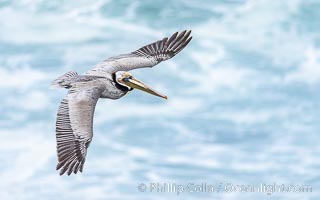
Pelican in Flight over Huge Waves in La Jolla, foamy ocean background, adult winter breeding plumage, wings spread wide.
Species: Brown Pelican, Pelecanus occidentalis, Pelecanus occidentalis californicus
Location: La Jolla, California
Image ID: 38914
Species: Brown Pelican, Pelecanus occidentalis, Pelecanus occidentalis californicus
Location: La Jolla, California
Image ID: 38914
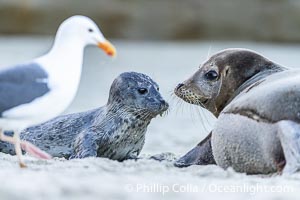
Newborn harbor seal pup is protected by its mother from a seagull. The seagull most likely wants to feed on the placenta, but it may also peck at and injure the pup. The seal mother does a good job of keeping birds off its newborn pup. Within an hour of being born, this pup had learned to nurse and had entered the ocean for its first swim.
Species: Pacific harbor seal, Phoca vitulina richardsi
Location: La Jolla, California
Image ID: 39075
Species: Pacific harbor seal, Phoca vitulina richardsi
Location: La Jolla, California
Image ID: 39075
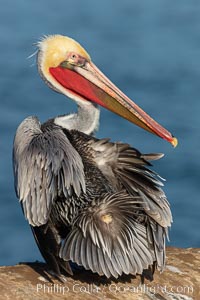
A brown pelican preening, uropygial gland (preen gland) visible near the base of its tail. Preen oil from the uropygial gland is spread by the pelican's beak and back of its head to all other feathers on the pelican, helping to keep them water resistant and dry. Note adult winter breeding plumage in display, with brown neck, red gular throat pouch and yellow and white head. This adult is just transitioning to the brown hind neck that characterizes breeding brown pelicans.
Species: Brown Pelican, Pelecanus occidentalis, Pelecanus occidentalis californicus
Location: La Jolla, California
Image ID: 36682
Species: Brown Pelican, Pelecanus occidentalis, Pelecanus occidentalis californicus
Location: La Jolla, California
Image ID: 36682
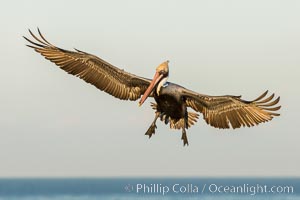
Brown pelican in flight, spreading wings wide to slow in anticipation of landing on seacliffs.
Species: Brown Pelican, Pelecanus occidentalis, Pelecanus occidentalis californicus
Location: La Jolla, California
Image ID: 30254
Species: Brown Pelican, Pelecanus occidentalis, Pelecanus occidentalis californicus
Location: La Jolla, California
Image ID: 30254
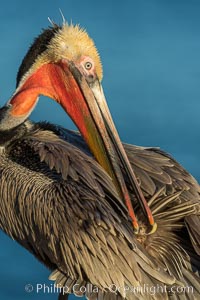
A brown pelican preening, reaching with its beak to the uropygial gland (preen gland) near the base of its tail. Preen oil from the uropygial gland is spread by the pelican's beak and back of its head to all other feathers on the pelican, helping to keep them water resistant and dry.
Species: Brown Pelican, Pelecanus occidentalis, Pelecanus occidentalis californicus
Location: La Jolla, California
Image ID: 30289
Species: Brown Pelican, Pelecanus occidentalis, Pelecanus occidentalis californicus
Location: La Jolla, California
Image ID: 30289
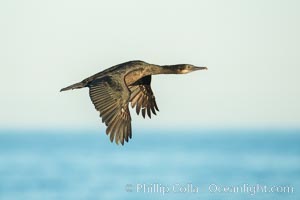
Brandt's cormorant cormorant in flight.
Species: Brandt's cormorant, Phalacrocorax penicillatus
Location: La Jolla, California
Image ID: 30306
Species: Brandt's cormorant, Phalacrocorax penicillatus
Location: La Jolla, California
Image ID: 30306
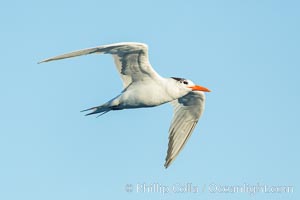
Royal tern in flight, winter adult phase.
Species: Royal tern, Sterna maxima, Thalasseus maximus
Location: La Jolla, California
Image ID: 30307
Species: Royal tern, Sterna maxima, Thalasseus maximus
Location: La Jolla, California
Image ID: 30307
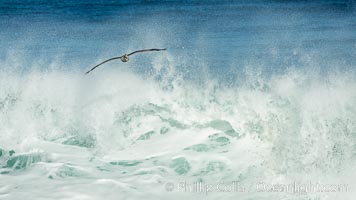
California Brown Pelican flying over a breaking wave.
Species: Brown Pelican, Pelecanus occidentalis, Pelecanus occidentalis californicus
Location: La Jolla, California
Image ID: 30364
Species: Brown Pelican, Pelecanus occidentalis, Pelecanus occidentalis californicus
Location: La Jolla, California
Image ID: 30364
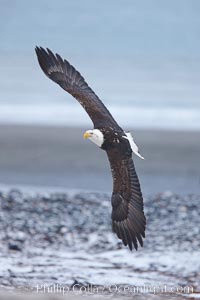
Bald eagle in flight, snow covered beach and Kachemak Bay in background.
Species: Bald eagle, Haliaeetus leucocephalus, Haliaeetus leucocephalus washingtoniensis
Location: Kachemak Bay, Homer, Alaska
Image ID: 22592
Species: Bald eagle, Haliaeetus leucocephalus, Haliaeetus leucocephalus washingtoniensis
Location: Kachemak Bay, Homer, Alaska
Image ID: 22592
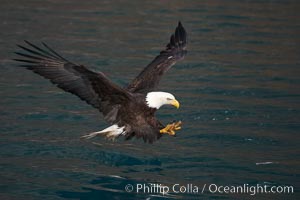
Bald eagle in flight spreads its wings and raises its talons as it prepares to grasp a fish out of the water.
Species: Bald eagle, Haliaeetus leucocephalus, Haliaeetus leucocephalus washingtoniensis
Location: Kenai Peninsula, Alaska
Image ID: 22593
Species: Bald eagle, Haliaeetus leucocephalus, Haliaeetus leucocephalus washingtoniensis
Location: Kenai Peninsula, Alaska
Image ID: 22593
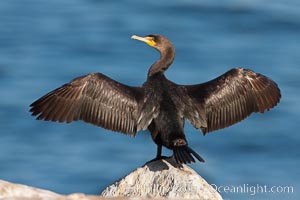
Double-crested cormorant drys its wings in the sun following a morning of foraging in the ocean, La Jolla cliffs, near San Diego.
Species: Double-crested cormorant, Phalacrocorax auritus
Location: La Jolla, California
Image ID: 26529
Species: Double-crested cormorant, Phalacrocorax auritus
Location: La Jolla, California
Image ID: 26529
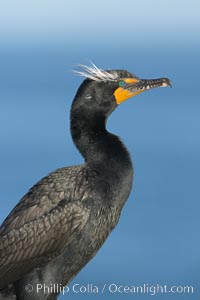
Double-crested cormorant, breeding plumage showing tufts.
Species: Double-crested cormorant, Phalacrocorax auritus
Location: La Jolla, California
Image ID: 15784
Species: Double-crested cormorant, Phalacrocorax auritus
Location: La Jolla, California
Image ID: 15784
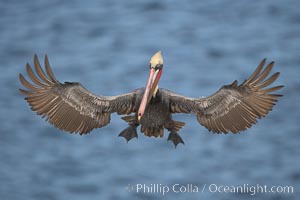
California brown pelican spreads its wings wide as it slows before landing on seacliffs.
Species: Brown Pelican, Pelecanus occidentalis, Pelecanus occidentalis californicus
Location: La Jolla, California
Image ID: 18228
Species: Brown Pelican, Pelecanus occidentalis, Pelecanus occidentalis californicus
Location: La Jolla, California
Image ID: 18228
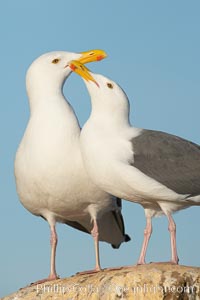
Western gulls, courtship behaviour.
Species: Western gull, Larus occidentalis
Location: La Jolla, California
Image ID: 18397
Species: Western gull, Larus occidentalis
Location: La Jolla, California
Image ID: 18397
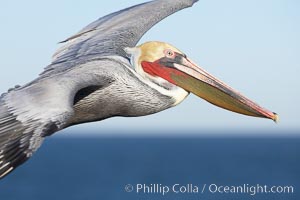
California brown pelican in flight, soaring over the ocean with its huge wings outstretched. The wingspan of the brown pelican can be over 7 feet wide. The California race of the brown pelican holds endangered species status. Adult winter non-breeding plumage showing white hindneck and red gular throat pouch.
Species: Brown Pelican, Pelecanus occidentalis, Pelecanus occidentalis californicus
Location: La Jolla, California
Image ID: 20083
Species: Brown Pelican, Pelecanus occidentalis, Pelecanus occidentalis californicus
Location: La Jolla, California
Image ID: 20083
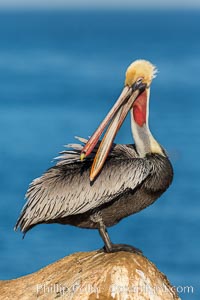
Brown pelican portrait, displaying winter non-breeding plumage with distinctive yellow head feathers and red gular throat pouch but white hind neck.
Species: Brown Pelican, Pelecanus occidentalis, Pelecanus occidentalis californicus
Location: La Jolla, California
Image ID: 28332
Species: Brown Pelican, Pelecanus occidentalis, Pelecanus occidentalis californicus
Location: La Jolla, California
Image ID: 28332
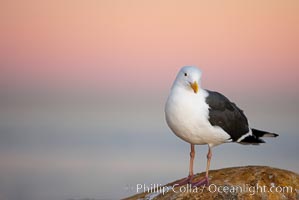
Western gull, early morning pink sky.
Species: Western gull, Larus occidentalis
Location: La Jolla, California
Image ID: 18394
Species: Western gull, Larus occidentalis
Location: La Jolla, California
Image ID: 18394
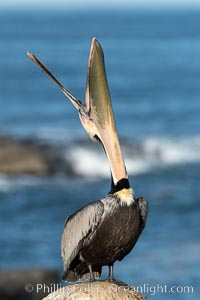
California Brown Pelican head throw, stretching its throat to keep it flexible and healthy.
Species: Brown Pelican, Pelecanus occidentalis, Pelecanus occidentalis californicus
Location: La Jolla, California
Image ID: 36678
Species: Brown Pelican, Pelecanus occidentalis, Pelecanus occidentalis californicus
Location: La Jolla, California
Image ID: 36678
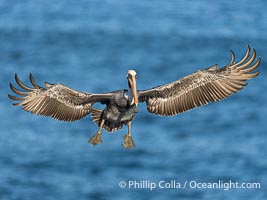
A California Brown Pelican flying over the Pacific Ocean, spreads its large wings wide to slow down as it banks, turns in midair, to land on seacliffs in La Jolla. Winter adult non-breeding plumage.
Species: Brown Pelican, Pelecanus occidentalis californicus, Pelecanus occidentalis
Location: La Jolla, California
Image ID: 39792
Species: Brown Pelican, Pelecanus occidentalis californicus, Pelecanus occidentalis
Location: La Jolla, California
Image ID: 39792
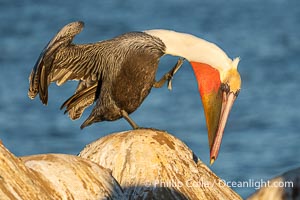
Brown Pelican Performs Yoga Pose Baddha Virabhadrasana, also known as Devotional Warrior or Humble Warrior. Winter adult non-breeding plumage.
Species: Brown pelican, Pelecanus occidentalis californicus, Pelecanus occidentalis
Location: La Jolla, California
Image ID: 39794
Species: Brown pelican, Pelecanus occidentalis californicus, Pelecanus occidentalis
Location: La Jolla, California
Image ID: 39794
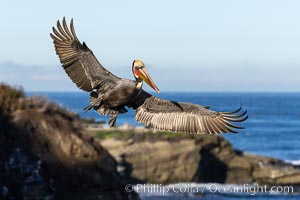
California brown pelican in flight, spreading wings wide to slow in anticipation of landing on seacliffs.
Species: Brown Pelican, Pelecanus occidentalis, Pelecanus occidentalis californicus
Image ID: 37414
Species: Brown Pelican, Pelecanus occidentalis, Pelecanus occidentalis californicus
Image ID: 37414
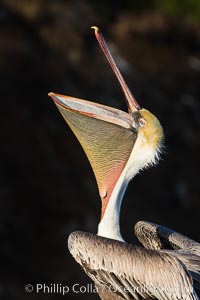
California Brown Pelican head throw, stretching its throat to keep it flexible and healthy. Adult winter non-breeding plumage.
Species: Brown Pelican, Pelecanus occidentalis, Pelecanus occidentalis californicus
Location: La Jolla, California
Image ID: 30174
Species: Brown Pelican, Pelecanus occidentalis, Pelecanus occidentalis californicus
Location: La Jolla, California
Image ID: 30174
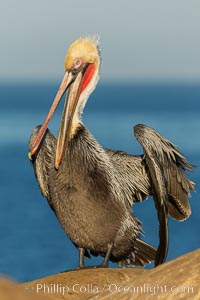
Brown pelican portrait, displaying winter plumage with distinctive yellow head feathers and red gular throat pouch. This adult is just transitioning to the brown hind neck characteristic of the brown pelican breeding plumage.
Species: Brown Pelican, Pelecanus occidentalis, Pelecanus occidentalis californicus
Location: La Jolla, California
Image ID: 30255
Species: Brown Pelican, Pelecanus occidentalis, Pelecanus occidentalis californicus
Location: La Jolla, California
Image ID: 30255
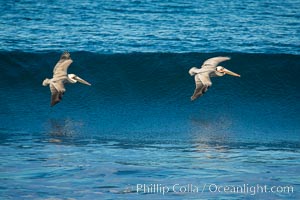
California Pelican flying on a wave, riding the updraft from the wave.
Species: Brown Pelican, Pelecanus occidentalis, Pelecanus occidentalis californicus
Image ID: 30257
Species: Brown Pelican, Pelecanus occidentalis, Pelecanus occidentalis californicus
Image ID: 30257
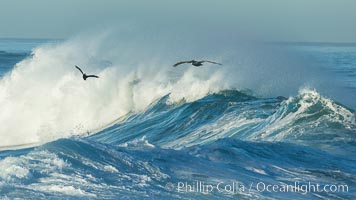
California Brown Pelican flying over a breaking wave.
Species: Brown Pelican, Pelecanus occidentalis, Pelecanus occidentalis californicus
Location: La Jolla, California
Image ID: 30353
Species: Brown Pelican, Pelecanus occidentalis, Pelecanus occidentalis californicus
Location: La Jolla, California
Image ID: 30353
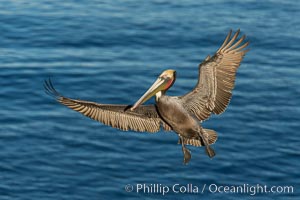
California brown pelican in flight. The wingspan of the brown pelican is over 7 feet wide. The California race of the brown pelican holds endangered species status. In winter months, breeding adults assume a dramatic plumage.
Species: Brown Pelican, Pelecanus occidentalis, Pelecanus occidentalis californicus
Location: La Jolla, California
Image ID: 28968
Species: Brown Pelican, Pelecanus occidentalis, Pelecanus occidentalis californicus
Location: La Jolla, California
Image ID: 28968